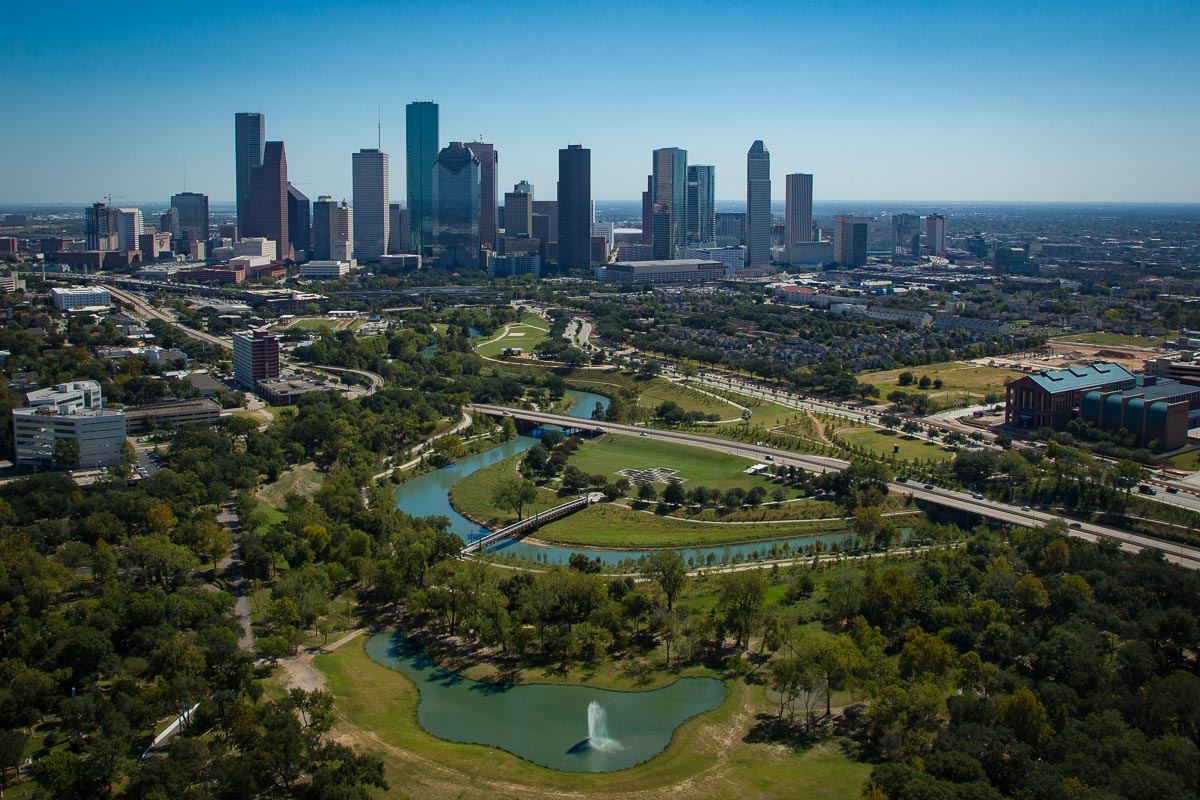Last week, Urban Edge editor Leah Binkovitz wrote about how researchers are investigating the way urban residents go about forming mental maps, specifically with landmarks as points of direction.
She wrote in part: "Landmarks are, as researchers Conner Bruns and Brant Chamberlain argue, 'universal features of human urbanization.' They are part of the urban fabric and, often, part of the mental maps people moving through the city generate and rely on as they navigate. The connection between landmarks and wayfinding has been well established but better understanding exactly how these cognitive maps come about, as well as their potential consequences, may be useful in planning more socially cohesive cities."
When promoting the post on social media, we asked our followers: What are some of the top landmarks in the Houston area? The landmarks below are a few of the responses, with the majority of the reader-identified landmarks situated within the 610 Loop.
Houston's many skylines
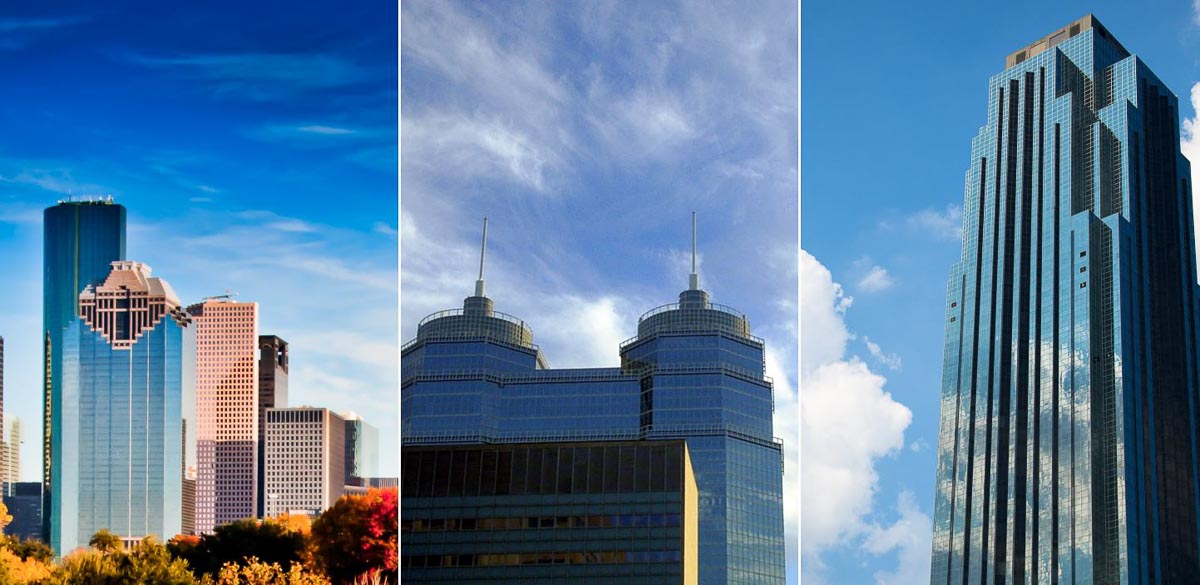
Houston's three largest skylines; downtown, the Texas Medical Center and the Galleria, are key landmarks for many navigating the city center. Photos by Flicker users SaifAli Master, AJ Gazmen, and Jason Trbovich.
The Bayou City's expansive sprawl has produced several skylines across the area, including downtown, the Galleria and the Texas Medical Center. The Energy Corridor is another area that holds the potential to become a fourth skyline to rise up from Houston's expanse.
For many responses, these three skylines were starting points of Houston's key landmarks. Within each of these are more specific landmarks, some of which are listed below.
Discovery Green and the GRB

Avenida Houston, George R. Brown Convention Center and Discovery Green from above. Photo from Visit Houston.
Within downtown is the George R. Brown Convention Center and Discovery Green. The greenspace of Discovery Green offers newcomers and residents a well-planned portion of Houston. The several-block area is a city planner's dream with greenspace, local program offerings, walkability components, retail and restaurant fronts and hotels.
Both Discovery Green and the Convention Center transformed to host many of the Super Bowl LI special events in 2017.
Houston's sports arenas
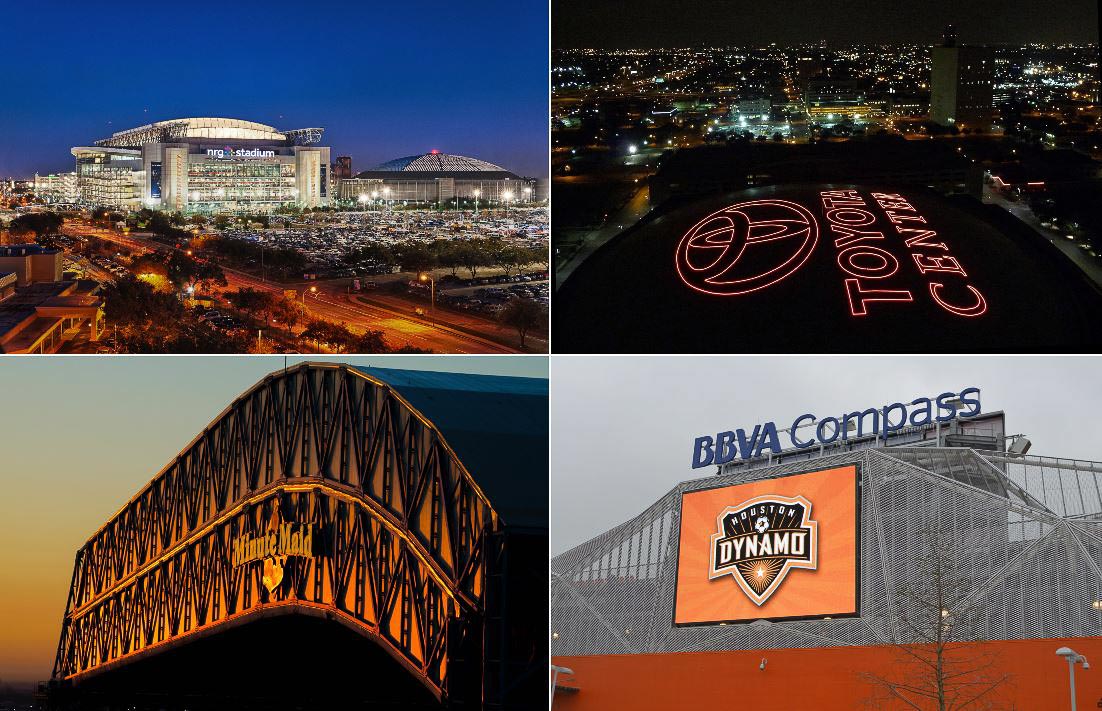
Houston's sports arenas; NRG Stadium/Astrodome, Toyota Center, Minute Maid Park and BBVA Compass Stadium are all within the Loop. Photos from top left, clockwise: Visit Houston, Michael via Flickr, Kelly Reed via Flickr, Gaz T via Flickr.
Also within downtown are three of the four sports arenas for Houston's professional teams.
Minute Maid Park hosts the Astros, the Toyota Center hosts the Rockets and the BBVA Compass stadium hosts the men's and women's soccer teams. The only other arena that isn't in the downtown area is NRG Park, which hosts the Texans, and the no-longer-used Astrodome, both located within the 610 South Loop.
The Menil Campus, the Rothko Chapel and the Broken Obelisk

The Menil Campus. Photo by Heather Leighton.
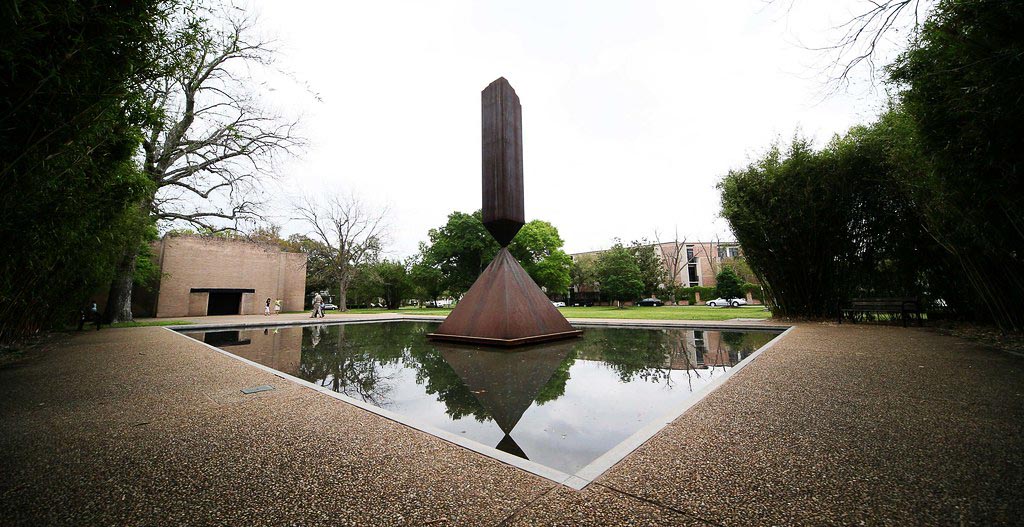
Rothko Chapel and Broken Obelisk. Photo by Ally Vo, Flickr.
Within the Montrose area is the Menil Campus, the free and open-to-the-public art collection of about 17,000 paintings, sculptures, prints, drawings, photographs and rare books donated by the founders John de Menil and Dominique de Menil.
Nextdoor to the campus is the Rothko Chapel, which was founded in 1871 and houses some of the more famous work from the Menil collection. It's currently closed for a restoration of the chapel and an expansion of the artwork by Mark Rothko.
The Waterwall
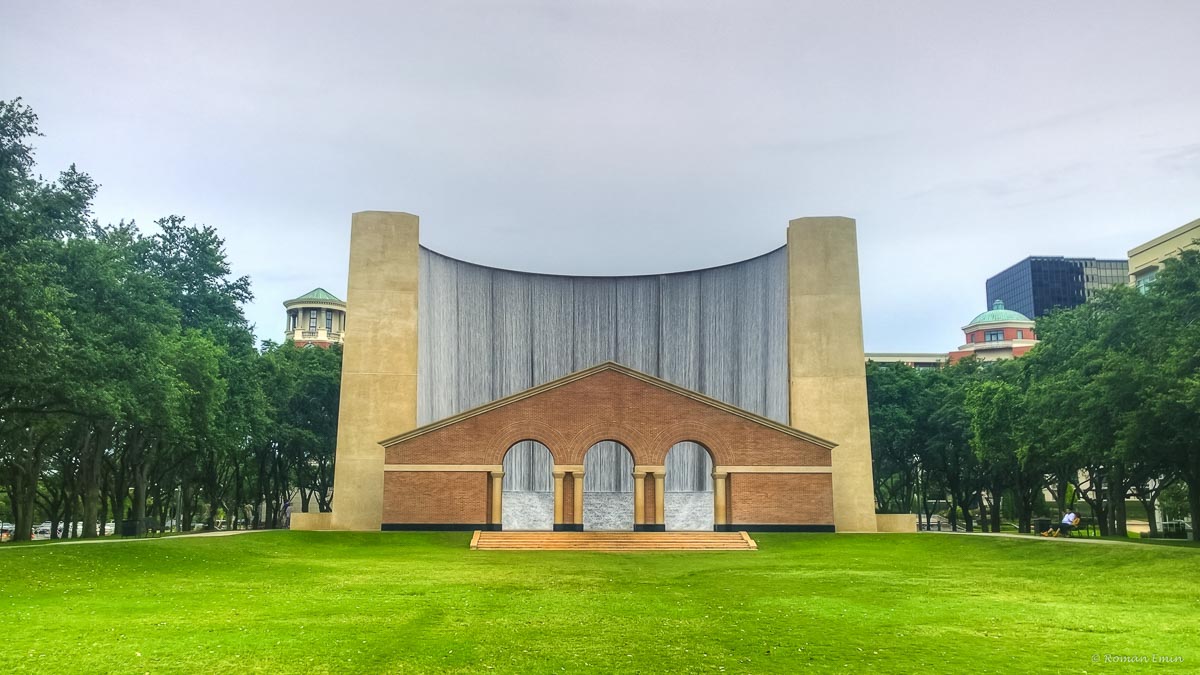
Williams Tower and the Gerald D. Hines Waterwall in the Galleria area. Photo by Roman Emin, Flickr.
The Williams Tower is the tallest building in the Galleria area west of downtown Houston and beside it is the Gerald D. Hines Waterwall.
The waterwall is Houston's iconic version of a waterfall and visitors around the world go to the installation to take photos, relax from the sounds, picnic or just generally enjoy the outdoors in a very urban district.
The Universities
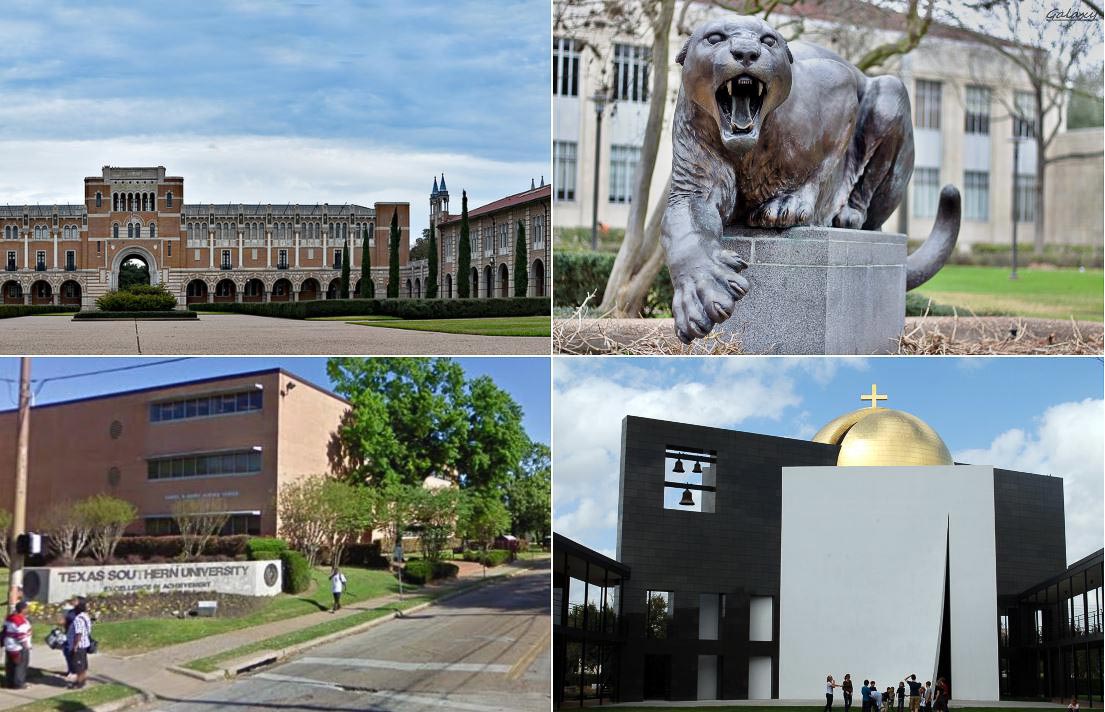
Rice University, University of Houston (UH Downtown), Texas Southern University, St. Thomas University and other college campuses are landmarks throughout the Houston area. Photos from top left clockwise: Shawn Murry via Flickr, Isaias Hernandez vis Flickr, Joe Wolf via Flickr and Google Maps.
Houston has several colleges and universities throughout the area.
Downtown hosts the University of Houston's downtown campus, off I-45 in Third Ward sit both the main campus of UH and Texas Southern University, Montrose hosts St. Thomas University and the Texas Medical Center is right across the street from Rice University. All, as well as several other colleges and community colleges, are used as landmarks throughout the vast city.
Houston's Parks
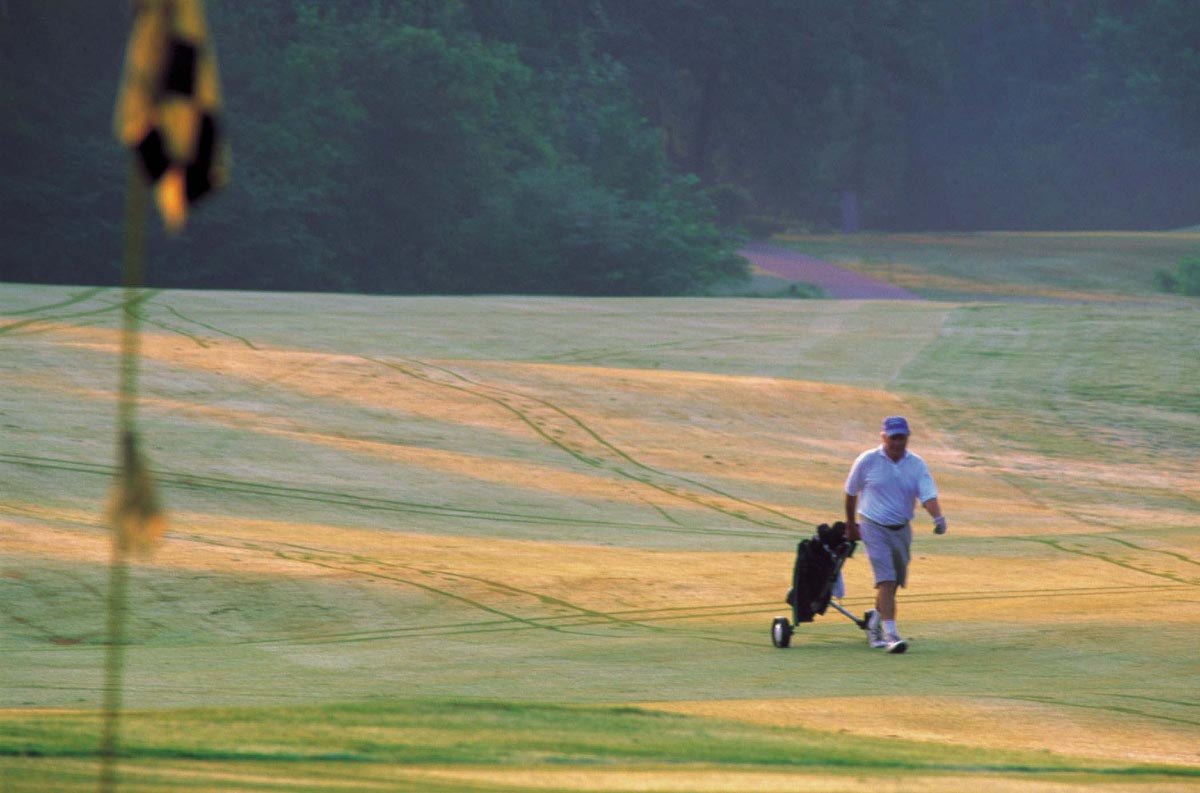
Memorial Park Golf Course. Photo via Visit Houston.
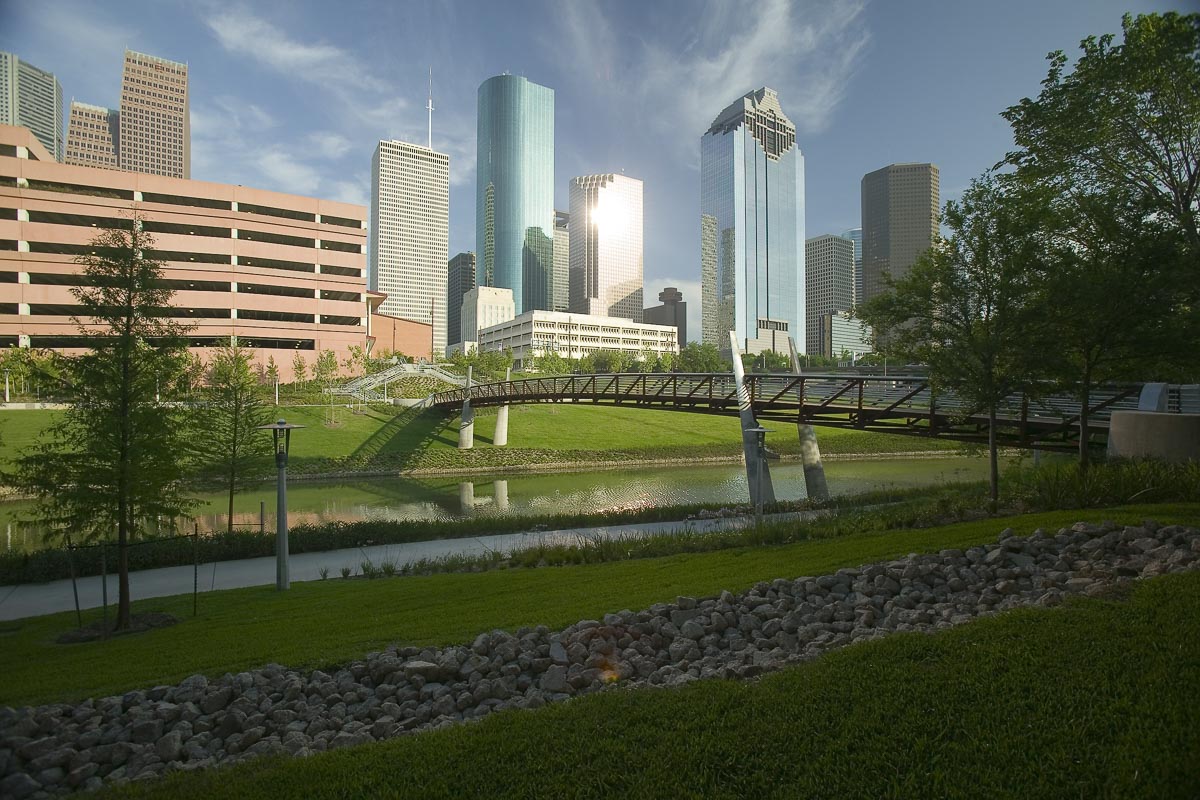
Downtown skyline and Buffalo Bayou Sabine to Bagby Promenade. Photo via Visit Houston.
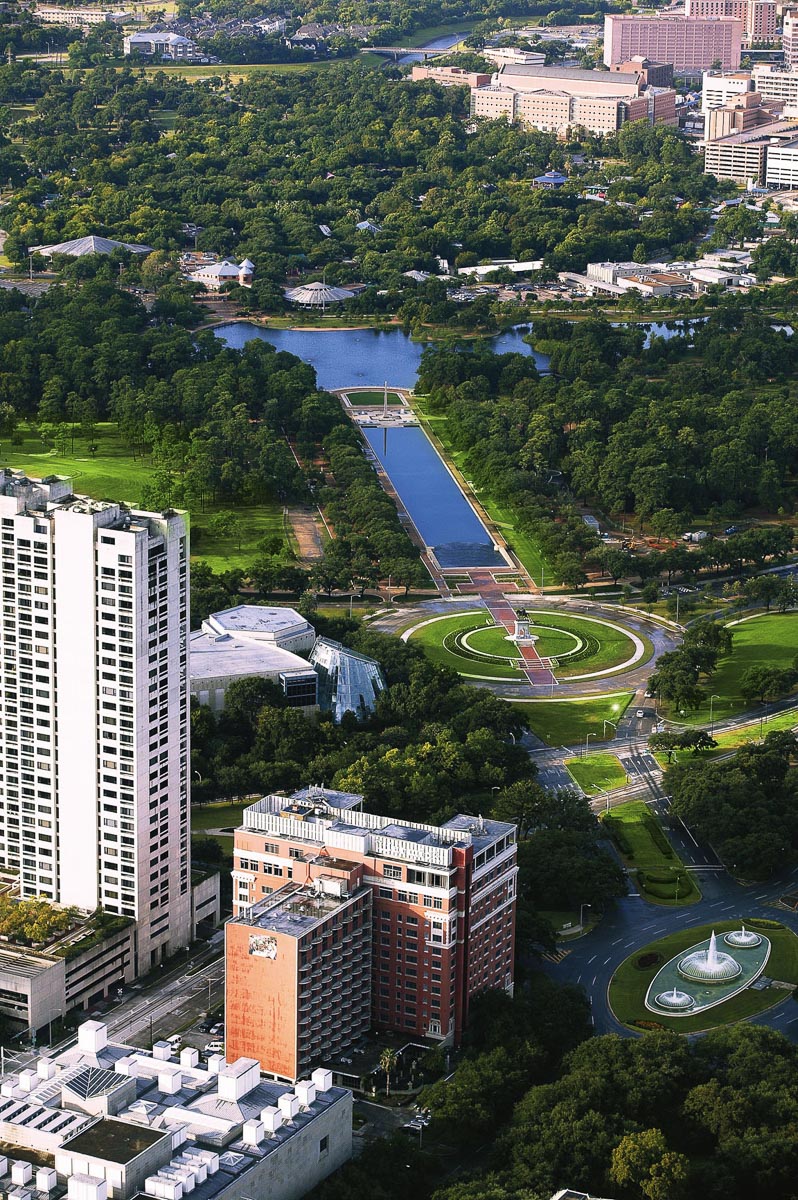
Hermann Park from above, including the Sam Houston statue, the park's reflection pool and the Pioneer Memorial Obelisk. Photo from Visit Houston.
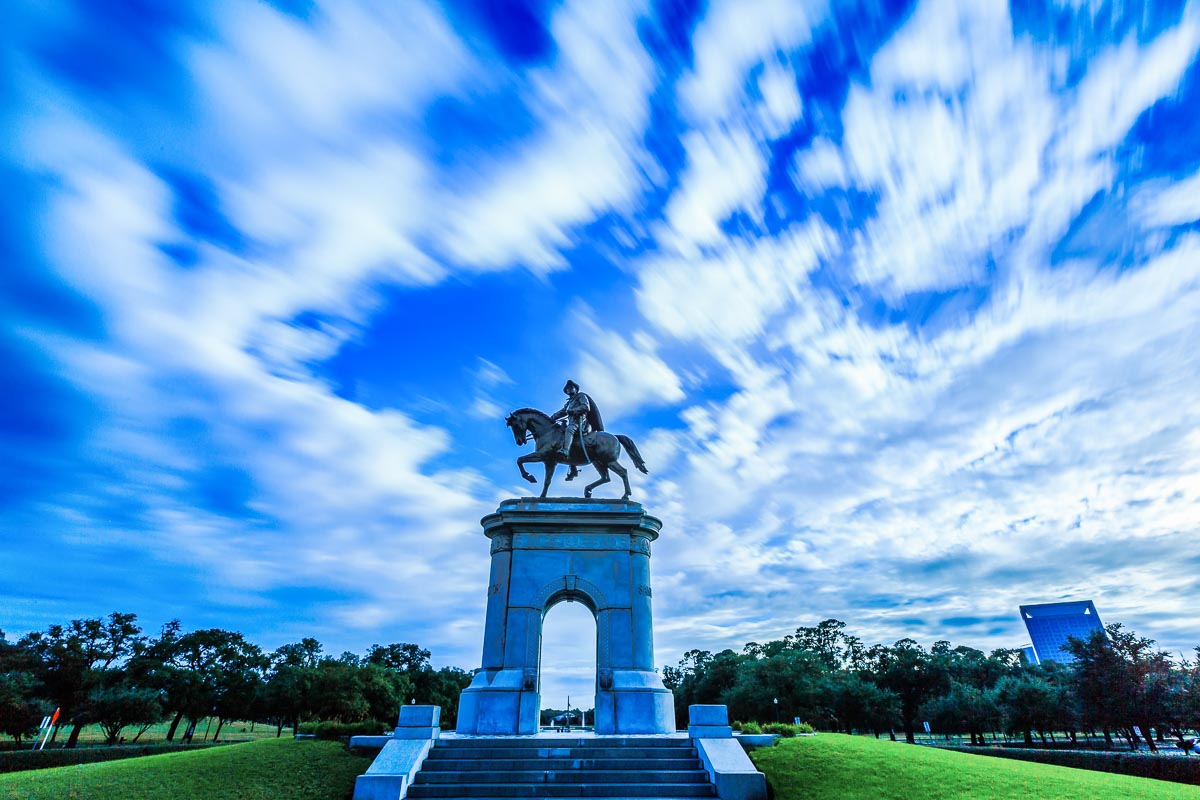
The Sam Houston Statue at Hermann Park. Photo: Srini Sundarrajan, Flickr.
Memorial Park is known for its vast golf greens and 3-mile loop and is hard to miss while heading into town on I-10.
Buffalo Bayou Park, just like its connecting bayous, including Brays, White Oak and others, are considered the veins that run through the city. They once weren't invested in, but residents found their value and improved the bayous to what we have now: A soon-to-be-connected system of waterways used for various outdoor, recreational activities.
Similarly, Hermann Park is the center that connects the Museum District to the Medical District and Rice University. The Sam Houston statue and Mecom Fountain are the two roundabouts in this area's center that connect these areas together.
Be Someone Graffiti
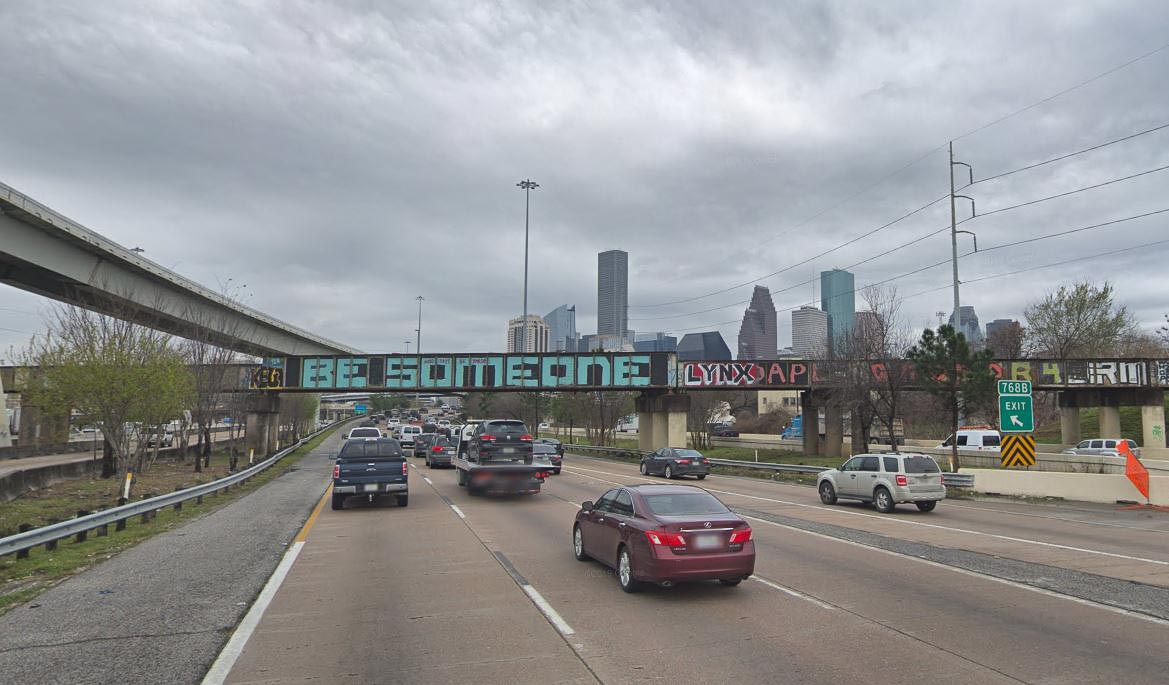
Houston's Be Someone sign. Photo via Google Maps.
The Be Someone sign is Houston's trademark graffiti. Located on the railroad tracks stretching across I-45 heading south, the signature sign makes headlines every time someone tampers with the message.
The location and message of the graffiti go hand-in-hand with each other as hundreds of thousands of workers travel to downtown every day reading the message, "be someone."
The Orange Show

The Orange Show Houston. Photo via Google Maps.
This unique art installation is a tribute to oranges by a late Houston mail carrier named Jeff McKissack. In 1956 he began creating what is now a unique art installation built by scrap materials and items McKissack discovered along his mail route.
Nextdoor to The Orange Show is Smither Park, Houston's first art-inspired park. More than 300 artists contributed permanent mosaics to the park to give it its unique, colorful design.
Emancipation Park
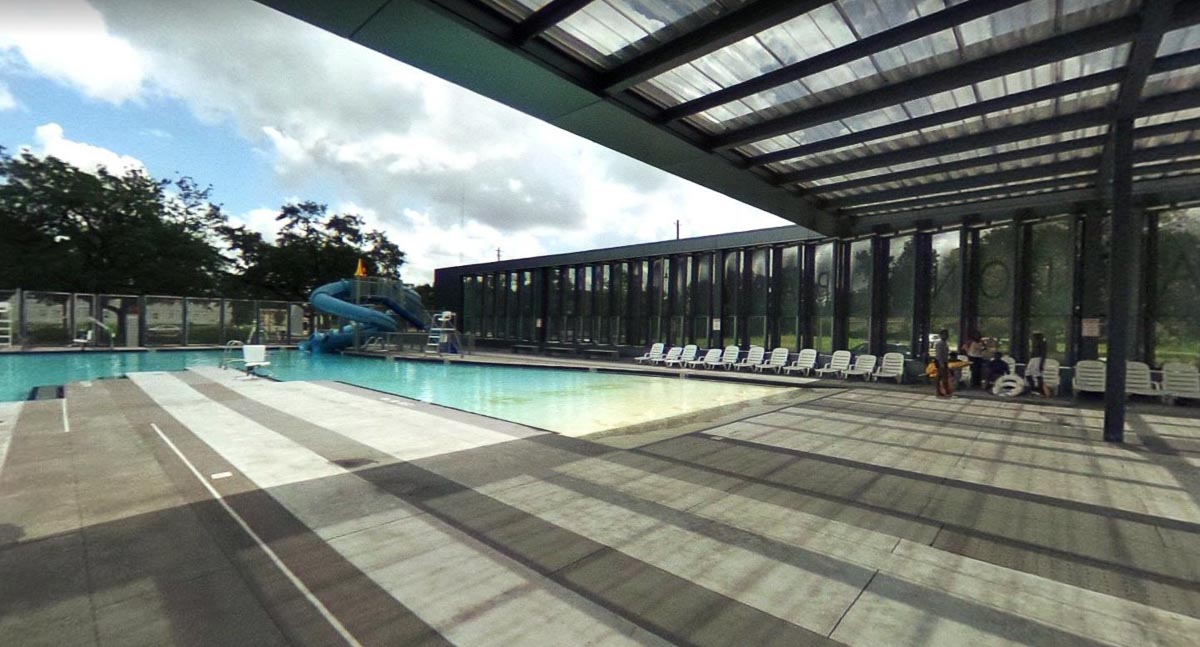
Emancipation Park's pool. Photo via Google Maps.
Emancipation Park has been in existence since 1872 when two prominent black churches pooled $1,000 together to purchase 10 acres of open land to celebrate Juneteenth. During racial segregation, Emancipation Park was acquired by the city and it was the only park African-Americans could use at the time.
After undergoing extensive renovations, including a new pool, indoor and outdoor basketball courts, picnic areas, playgrounds and tennis courts, the park recently reopened on June 17, 2017.
The Reservoirs

Barker and Addicks Reservoirs. Photo via Google Maps.
Addicks and Barker Reservoirs are a combined 26,000 acres used as a flood control system that attempts to prevent downstream flooding of Buffalo Bayou and Mayde and Bear Creeks.
The reservoirs were made in the 1940s, but were criticized on their effectiveness following the extensive damages caused by Hurricane Harvey.
Houston's Temples
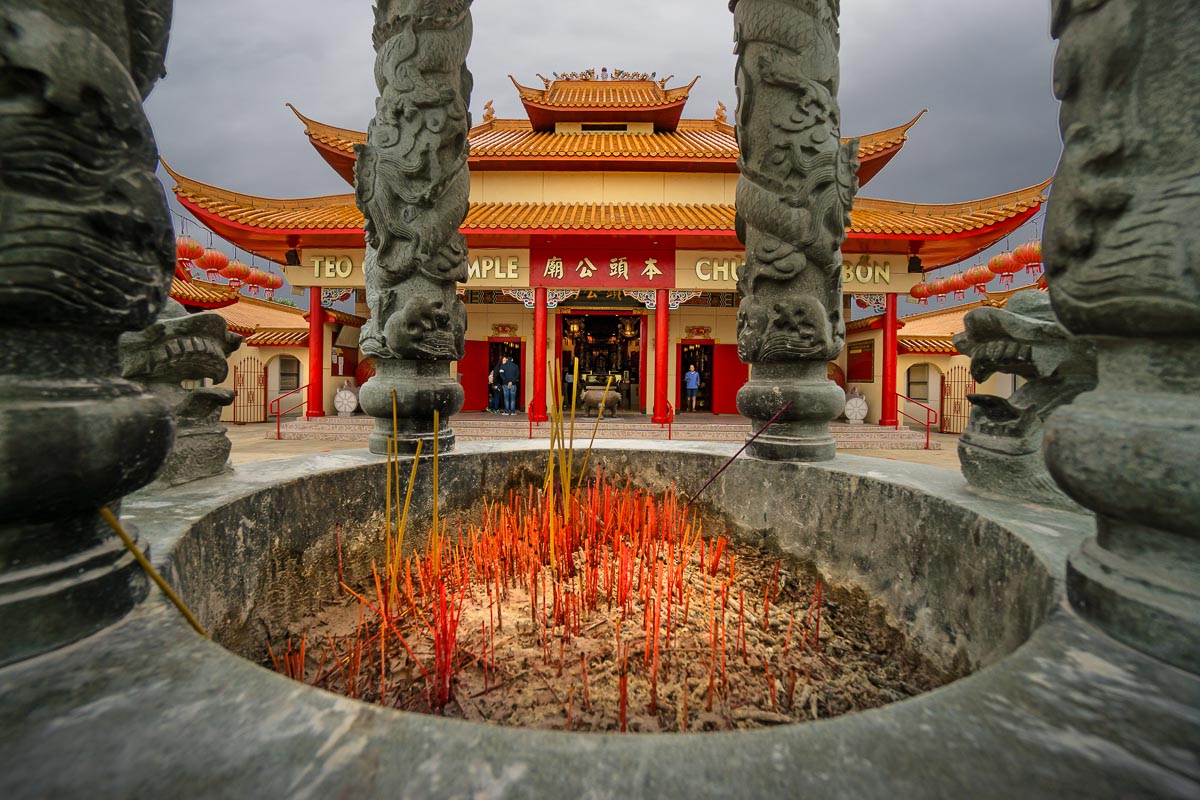
Teo-Chew Temple. Photo via Visit Houston, Pavel Kaplun / Kreativstudio Pavel Kaplun.

BAPS Shri Swaminarayan Mandir. Photo via Jessica Hamilton-Young.
The temples in the southwest portion of Houston are a perfect example of Houston's diversity.
The Buddhist Teo Chew Temple and BAPS Shri Swaminarayan Mandir traditional Hindu temple are both examples of the religious diversity Houston hosts.
Destinations like the Hong Kong City Mall and other Asian markets also exemplify the area's diversity.
Houston Ship Channel
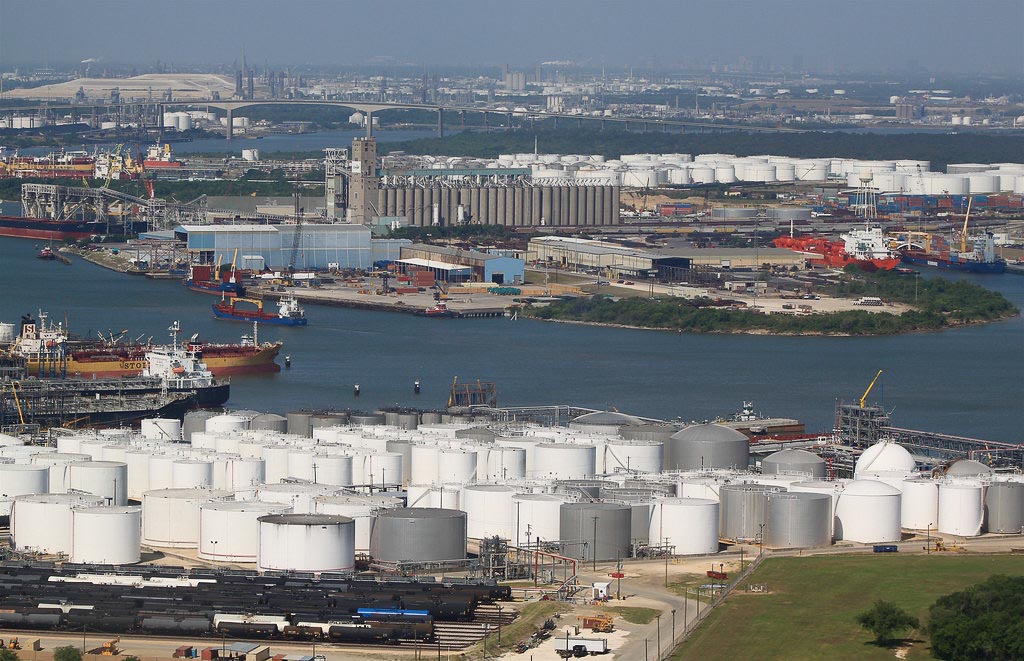
Houston Ship Channel. Photo via Roy Luck, Flickr.
The Houston Ship Channel is another key landmark and locator for Houstonians, according to our followers' responses. The port is among the unique qualities of Houston both socially and economically. Much of the city's imports and exports are transferred through the Houston Ship Channel.

